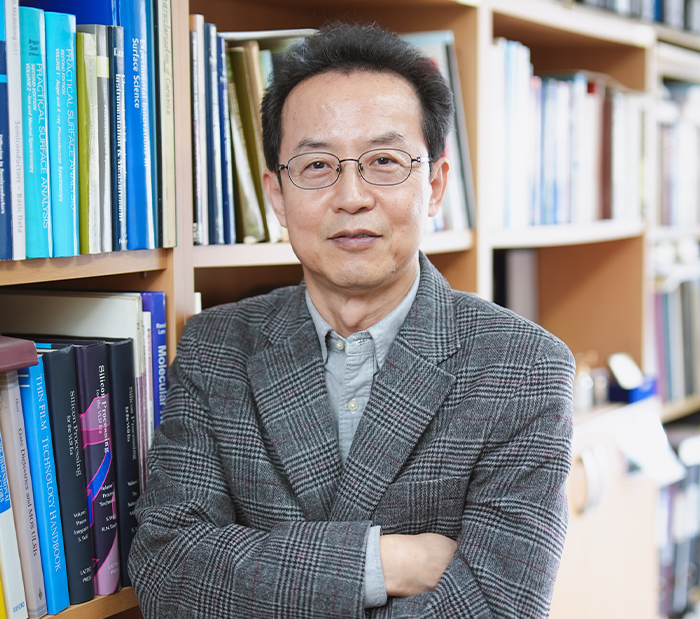Predicting and demonstrating of hidden metastable phase in transition metal oxide
Advanced Materials Science and Engineering LEE, JAICHAN Prof. · Bongwook Chung

-
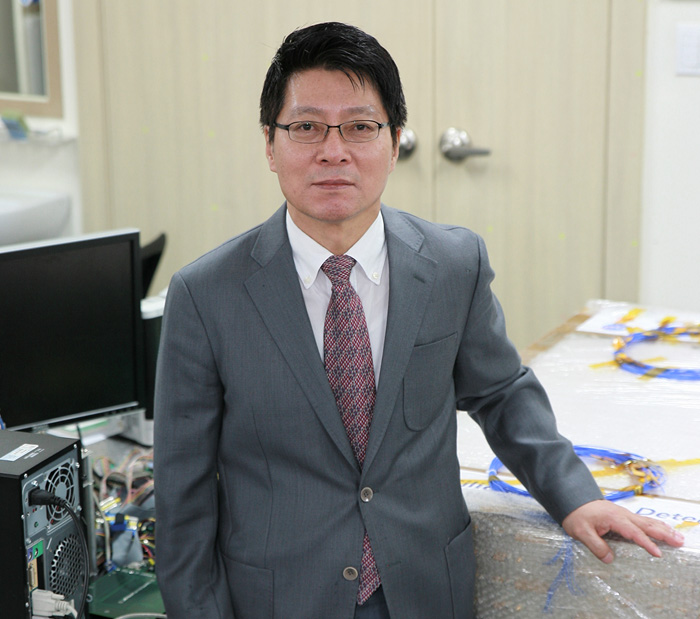
Physics PARK, IL HUNG Prof.
Space Experiment Instrument Developed by SKKU Research Team will be bound Internation Space Station
Space experiment instrument developed by Sungkyunkwan university research team will be bound for the International Space Station. Sungkyunkwan university announced a silicon charge detector(SCD) developed by research team of Prof. Ilheung PARK of department of physics will be delivered to the International Space Station on 15th, at 1:31 pm(Korea time) at the Kennedy Space Center in the United States. The space experiment instrument will be delivered to space by a SpaceX rocket ‘Dragon’. It will be installed on an outside module of the International Space Station and be expected to perform space mission for at least three years. The silicon charge detector is instrument to measure component of cosmic rays which is particles falling to Earth from space. It is made by using Semiconductor sensor technology. Cosmic rays is first detected in 1912, but its origins or spread processes have not been identified for more than 100 years. So, The Cosmic Ray Energetics And Mass mission destined for the International Space Station (ISS-CREAM) is designed to measure the highest-energy cosmic rays by National Aeronautics and Space Administration (NASA). The Republic of Korea, the United States, Mexico and France are participating in the experiment. According to Sungkyunkwan University, the silicon charge detector will play a key role in the ISS-CREAM. It is made of pure domestic technology and has an area of 1 ㎡ and a weight of 150 ㎏, which is the maximum size of a detector used in space. Four layers of silicon sensors measure component of cosmic rays. (Accuracy 99%) This detector was developed by Sungkyunkwan University in cooperation with Korea Electronics and Telecommunications Research Institute and small and medium enterprises, and Korea Institute of Industrial Technology did space environment experiment. The whole process was conducted in Korea. Prof. PARK said “This is the first time that domestic high-tech instrument is used in large space experiment of the International Space Station.”, and “This is a case we make the core instrument for main space project of NASA, and participate as main partner.”
- No. 54
- 2018-07-05
- 1881
-

Chemistry RYU, DOHYUN Prof.
Prof. Do Hyun RYU Develops the First Catalytic Asymmetric Synthesis of 2,5-dihydrooxepine
A research team led by Prof. Do Hyun RYU (Dept. of Chemistry) has developed the first catalytic synthetic method of chiral 2,5-dihydrooxepine. 2,5-Dihydrooxepine, seven-membered cyclic compound containing oxygen atom, is a structural core of many important natural products. Therefore, a variety of synthetic methods have been widely developed for several decades. However, there has been no example of catalytic asymmetric synthesis of 2,5-dihydrooxepines and multiple synthetic steps were required to prepare corresponding starting materials. The research team developed asymmetric synthetic method of highly functionalized 2,5-dihydrooxepine with chiral Lewis acid catalyst through cyclopropanation/retro-Claisen rearrangement tandem reaction to give good yields and high enantioselectivity. Developed methodology exhibits excellent atom economy because this utilizes simple starting materials and nitrogen gas (N2) is the only by-product. Since there are various bioactive natural products which possess dihydrooxepine as a key structure, chiral 2,5-dihydrooxepine derivatives synthesized with developed method are expected to be used in bio- or medicinal chemistry fields. Prof. RYU said "the value of this work is to synthesize enantioenriched 2,5-dihydrooxeines from simple starting materials using catalyst. Furthermore, this work is highly valuable because this suggests experimental results to support computational calculation data about reaction mechanism of retro-Claisen rearrangement of cyclopropane to 2,5-dihydrooxepine." This research was published in the Angewandte Chemie International Edition (IF : 11.709) as of April 18th, with the title of "Catalytic Enantioselective Synthesis of 2,5-Dihydrooxepines" (doi: 10.1002/anie.201700890). This work was selected as a Very Important Paper (VIP) and front cover page of July 17th.
- No. 53
- 2018-07-05
- 1924
-
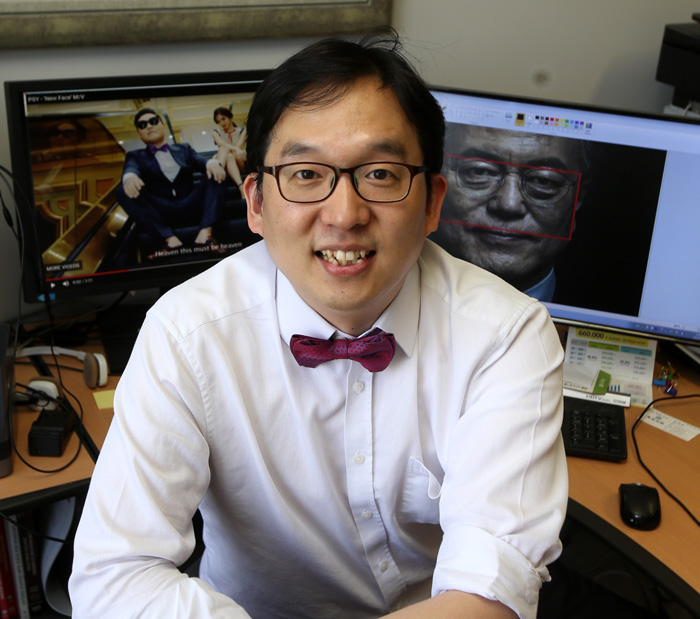
Business Administration KIM, YOUNGHAN Prof.
Prof. Young Han KIM Finds the Relationship between Media Appearances and Compensation
New research that examined 4,452 CEOs from 2,666 U.S. firms, as well as 104,129 news articles and 6,567 CNBC interviews, found that CEOs who appeared in CNBC interviews could expect their compensation to increase by $210,239 on average, notwithstanding firm performance and other mitigating factors. The research will be published in the upcoming volume of the INFORMS journal Organization Science. The research authors, Jingoo KANG of the Nanyang Business School and Andy Han KIM of the SKKU Business School, found the relationship between media appearances and compensation between 1997 and 2009 was strongest when the CEO was from a smaller firm or one that demonstrated a strong stock market performance in the wake of increased media visibility. Improved stock performance serves as strong supporting evidence to the employer of the CEO’s role in increasing the company’s visibility and that of its stock. This in turn provided the CEO with increased bargaining power for greater compensation, up to $130,925 more than their counterparts in larger firms. “For highly visible CEOs of larger firms, media appearances will only have a small visibility-enhancing effect,” said KANG. “On the other hand, for CEOs of smaller companies who are less well known, media appearances will have a strong visibility-enhancing effect.” For CEOs in larger, well-known companies that already have a high degree of visibility, the additional visibility-enhancing effect of media appearances was weaker for those CEOs, as there was little additional growth that corresponded to the CEO’s presence in the media. In addition, when the CEO had a high equity ownership or was the founding CEO, that positive relationship disappeared. The tone of media coverage also had an impact on the relationship between CEO media appearance and compensation, but primarily when the coverage was a CNBC interview. “When the tone of the media is more negative, the positive relationship between the media appearance and compensation becomes weaker,” said KIM. “In contrast, in the CEO news article models, we did not find a statistically significant interaction.” The full study can be found here. To cite this study: Jingoo KANG and Andy Y. Han KIM (2017). “The Relationship Between CEO Media Appearance and Compensation” forthcoming in the INFORMS journal Organization Science. About INFORMS and Organization Science INFORMS is the leading international association for operations research and analytics professionals. Organization Science, one of 14 journals published by INFORMS, is a leading academic journal that covers groundbreaking research about organizations, including their processes, structures, technologies, identities, capabilities, forms, and performance. More information is available at http://www.informs.orgor @informs.
- No. 52
- 2018-07-05
- 1969
-
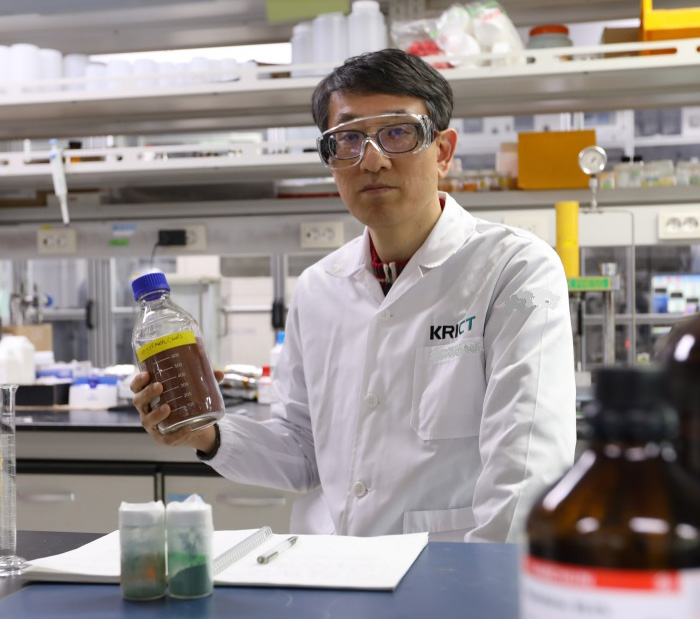
Chemistry CHANG, JONGSAN Prof.
Prof. Jong San CHANG Develops a Study on Selective Nitrogen Capture by Porous Hybrid Materials
Prof. Jong San CHANG (dual-appointed professor, Dept. of Chemistry, SKKU and KRICT) and his colleagues have recently published an important article, titled “Selective nitrogen capture by porous hybrid materials containing accessible transition metal ion sites’’ in Nature Materials (doi:10.1038/nmat4825). It is known that selective dinitrogen binding to transition metal ions mainly covers two strategic domains: the biological nitrogen fixation, catalyzed by metalloenzyme nitrogenases, and the adsorptive purification of natural gas and air. Many transition metal-dinitrogen complexes have been envisaged for biomimetic nitrogen fixation to produce ammonia. Inspired by this concept, Prof. CHANG's group developed the first-ever adsorbent, a mesoporous Metal-Organic Framework (MOF) material containing accessible Cr(III) sites, able to thermodynamically capture N2 over CH4 and O2. This study resulted from cooperative international research, mainly between the research group for nanocatalysts at KRICT and several groups at the National Center for Scientific Research (CNRS) in France. The study presents a major breakthrough in the domain of the selective capture of nitrogen (here N2 mixed with CH4 and O2) using a porous hybrid solid, called a metal-organic framework (MOF), which contains accessible chromium (III) ion sites. The selective adsorption of N2 is a strategic issue, with the related applications, such as the upgrading of natural gas (for the production of pipelined natural gas (PNG) and compressed natural gas (CNG) as alternative fuels) and the purification of air being amongst the most critical challenges facing the industry today. For the moment, the discovery of a porous adsorbent sufficient for such purposes had not yet been achieved because these solids typically exhibit a better affinity for gases such as CH4 or O2 than N2. In this context, Prof. CHANG's group has first introduced the utilization of the concept of cationic unsaturated sites (CUS) for generating drastic changes in host-guest interactions (a general problem in materials science), which is useful to induce an unprecedented affinity for N2 with respect to other gases, far above the performances of materials currently used for the target application. The porous adsorbent material that combines a high selective adsorption, large uptake, easy regeneration, excellent recyclability, and good chemical/thermal stability offers a unique opportunity to achieve highly-efficient N2 capture that is difficult to attain using conventional approaches. From the results, they could identify a clear and striking advance in fundamental understanding or material design. They evidenced the unique property of this solid through a multidisciplinary approach combining state-of-the-art experimental and computational methods. This included structural aspects, infrared spectroscopy, equilibrium and breakthrough adsorption experiments and quantum/force field-based molecular simulations. Inspired by biomimetic and metal dinitrogen chemistry concepts, this multidisciplinary fundamental study revealed that designing MOFs with unsaturated metal sites into their cages offers a unique opportunity to achieve unprecedented, highly efficient N2 capture. It is believed that this publication will pave the way towards unprecedented adsorption-based technologies in the fields of energy, environment, medicine and catalysis by pushing the limits of our current knowledge on porous materials chemistry. In addition to this, the manipulation of multifunctional MOFs possessing both selective N2 binding and catalytic sites may propel forward progress in developing future enzymatic catalysts for N2 fixation, which is a dream of chemists, to produce nitrogen-containing chemicals.
- No. 51
- 2018-07-05
- 3516
-
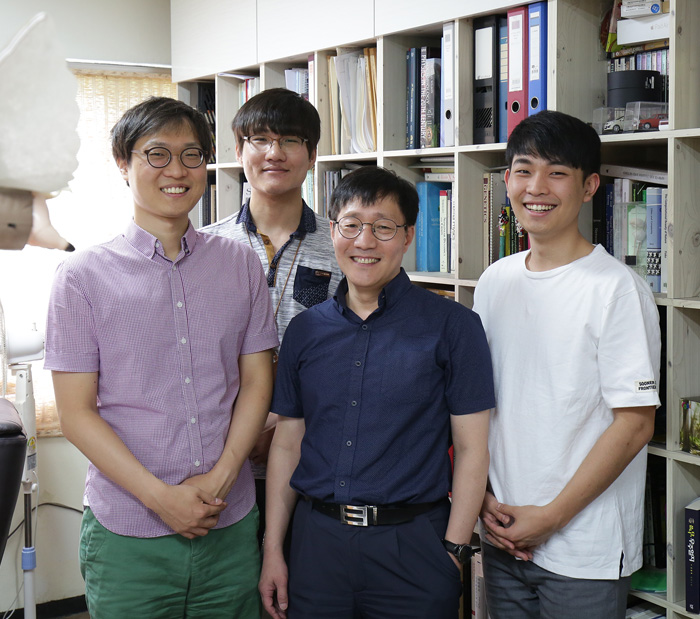
Physics KIM, BEOMJUN Prof.
Taller People Are Thinner, a Study by Prof. Beom Jun KIM
If the human body is stretched in three directions of width, length and height, the weight of a human body is proportional to the cube of its height. However, this is not valid in reality, and the body-mass index (BMI) is often calculated from the weight divided by the square of the height. From such definition of the BMI, Prof. Beom Jun KIM has shown that the waist circumference of a human is not proportional to the height, but proportional to the square root of the height. In other words, if the body-mass index is the same, the taller person is thinner. “This is the reason why many fashion models are tall,” Prof. KIM says. By analyzing the data of the length and weight of a variety of fishes, whales, and quadrupedal land mammals, Prof. KIM has shown that weight is proportional to the square of the height only for humans. In the case of other animals, the weight is proportional to the cube of the height. He presumed the reason why the calculation of the body-mass index of a human differs from that of other animals is that humans are bipedal, standing and walking upright. From this, he predicted that in the case of infants who cannot walk yet, their weight should be proportional to the cube of their height, but children older than about one year old should have a weight proportional to the square of their height. This prediction was tested for data from Sweden, Korea, and the World Health Organization, and was confirmed to be correct. If we consider the human body as the form of a simple cylinder and apply the condition that the torque by gravity and the torque by muscle must be in balance, we can show that the weight of a human should be proportional to the square of the height using Newtonian mechanics of physics. Prof. KIM also said that if we measure the size of the pelvis and the height from human fossil records, we will be able to deduce the time when mankind started to walk upright. Figure 1. Graphs of the relationship between the height (H) and the weight (M) of pale chub fish, whales and land mammals. All three graphs show that the animals’ weight is proportional to the cube (p = 3) of the height. For land animals, the height (H) can be measured in two ways: shoulder height and head-to-tail length. Both ways to measure the height meet the relationship (M is proportional to the cube of H). Figure 2. Graphs of the relationship between the height (H) and the weight (M) of children from Sweden and Korea. In this figure, the purple dots represent infants younger than one year old, and the orange dots represent children older than one year old. At one year of age, the time when a child begins to walk, the relationship between the height and weight is changed. Before one year, the weight is close to the cube of the height as with the other animals in Figure 1 above, but after one year, weight is close to the square of the height. Figure 3. A simple model of a human body. By applying the equilibrium condition of the torque by gravity (Fg) and the torque by muscle (Fm), we can show that the weight of a human being should be proportional to the square of the height. Figure 4. According to the body-mass index calculation method, the waist circumference of a human being is proportional to the square root of the height. The figure shows how body somatotype is changed according to the height if the body-mass index is the same. The taller the person is, the thinner it becomes. In the figure, when the height doubles, the waist circumference is about 1.4 times (or the square root of 2) smaller. Figure 5. Unlike a human body, when the length of a fish doubles, the height of the torso also doubles. In other words, it is difficult to know the actual fish size only from fish pictures without comparisons because both big fish and small fish look the same. This is because the weight (or volume) of the fish is proportional to the cube of its length.
- No. 50
- 2018-07-05
- 2112
-
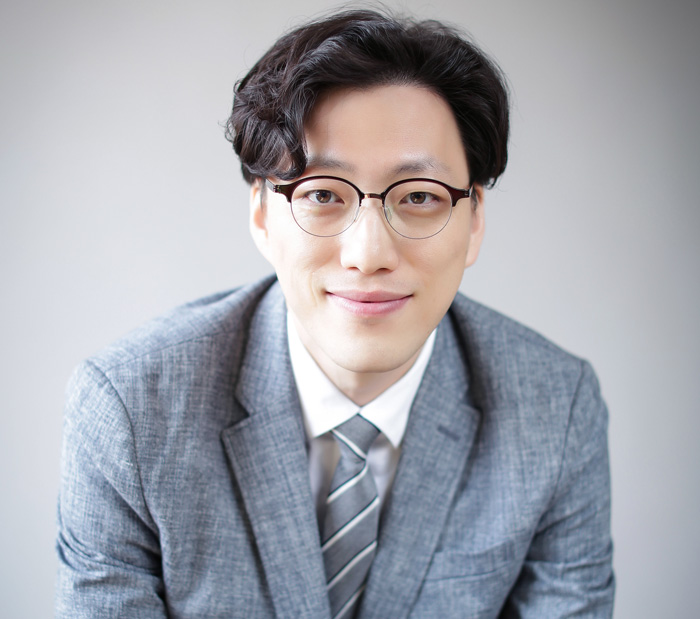
Electronic and Electrical Engineering BAAC, HYOUNGWON Prof.
Photomechanical Detachment and Retrieval of a Single Cell from Microfluidics for Downstream Analyses
A new technology to detach a single cell selectively and ‘safely’ from a cell culture substrate has been developed by Hyoung Won BAAC (Assistant professor of electronic and electrical engineering of SKKU, co-first author), Euisik YOON (Professor of electrical engineering and computer science of University of Michigan-Ann Arbor, corresponding author), and a team of researchers at the Univ. of Michigan, whose work has been published in ACS Nano 11, 4660 (2017). They developed a very useful experimental method, using a short pulse laser-based photomechanical effect in a carbon nanotube (CNT)-polymer composite film, and utilized it to study ultimate heterogeneity of cancer cells, i.e. a self-renewal process, in this work, which is a key characteristic to maintain unrestrained growth, metastatic capability, and drug resistance. Cell detachment is being routinely performed every day in biology labs over the world, typically using chemical treatment, called trypsinization. However, this does not provide spatial selectivity when cells are chemically detached from a substrate. This also involves unwanted modification of cell membrane proteins and their properties, although it guarantees high cell viability. Other techniques using laser-induced ablation or tip-based physical removal are available with spatial selectivity and no chemical modification, but cell viability has been extremely low with these approaches so far. The newly developed approach uses a photomechanical effect (laser-generated microbubbles and/or shear-forces) to detach cells placed on a laser focus which can be flushed out through a microfluidic channel for safe harvesting. It was confirmed that the retrieved cells exhibit not just high viability but also intactness of cell membranes. Furthermore, the cells could be analyzed in secondary stages: for example, gene sequencing or continued culture for proliferation of specific cells with heterogeneity. For the first time in a single cell level, the new method allowed to compare two different sister cells from a single mother cell; some genes are activated or deactivated in the sister cells; some cancer cells from an identical origin can be resistant to drugs. “The new technique enables laser-precision selectivity together with cell viability. It is very practical and fundamental, which can be widely utilized for biology labs performing cell culture and analysis research,” said Prof. BAAC.
- No. 49
- 2018-07-05
- 1952
-

Semiconductor Systems Engineering JEON, JAE WOOK Prof.
Deep Learning System for Recognition & Detection of Pedestrians & Vehicles in Hostile Environments
Autonomous vehicles are self-driving vehicles that can recognize their surroundings, understand their risks, and plan their routes. Currently, the sensors that autonomous vehicles use to recognize their surroundings include cameras, radar, and LiDAR. Different from human eyes and cameras, radar and LiDAR do not provide dense information; they only provide sparse information. Therefore, it is difficult to recognize pedestrians and vehicles using radar and LiDAR. It is only possible to calculate the distance between a vehicle and its object by using these sensors. Recent camera-based obstacle detection technology can detect pedestrians and vehicles under good weather conditions, but cannot detect pedestrians and vehicles properly under hostile weather conditions such as heavy snow, heavy rain, or darkness at night. The laboratory led by Prof. Jae Wook JEON developed a new Deep Learning technology that could recognize and detect pedestrians and vehicles in hostile conditions. First, new technologies of stereo matching and local patterns in hostile environments have been developed for obtaining the robust distance and shape information of objects by using two cameras and the robust feature information, respectively. Then, the resultant information from the camera image information has been used to train the Deep Learning system. Unlike existing Deep Learning systems which use only a single camera, a new Deep Learning system has been trained by using two cameras installed in a real vehicle. These two cameras have been used to collect training image information, including hostile conditions. Our lab also developed a Deep Learning technology that can accurately recognize pedestrians, vehicles, traffic lights, and traffic signs on actual roads in real time. With this Deep Learning technology, our lab won 1st prize in the embedded system sector and 2nd prize in the PC sector at the 13th Hyundai Motor Group Future Vehicle Technology Competition: Autonomous Vehicle Competition Image Recognition Area in May 2017. In future autonomous vehicles, it will be necessary to perform the recognition of lanes and their branch merge locations, recognition of traffic lights and traffic signs, autonomous parking, and context understanding of vehicle environments by using several cameras installed in a vehicle. Our lab will continue intelligent image processing research in order to achieve this goal.
- No. 48
- 2018-07-05
- 1922
-

Advanced Materials Science and Engineering WHANG, DONGMOK Prof.
'반도체 위에 성장한 비정질 그래핀' 신기술 개발
비정질 그래핀 합성 원천기술 세계 첫 개발, 성균관대-삼성전자 공동 연구결과 국내 연구진이 꿈의 신소재로 불리는 그래핀의 새로운 형태인 비정질 그래핀의 대면적 합성 기술을 개발, 대표적인 차세대 신소재인 2차원 소재의 응용범위 확산에 새로운 전기를 마련한 것으로 알려졌다. 공과대학 신소재공학부의 황동목 교수, 이재현 박사 등 성균관대 연구팀이 삼성전자 종합기술원 황성우 전무, 주원제 박사 등과 공동으로 반도체 웨이퍼 위 “대면적의 단원자층 비정질 그래핀 합성” 원천기술을 세계 최초로 개발했다. 그래핀은 탄소원자들이 육각형의 격자를 이루며 규칙적으로 배열된 구조를 가진 단일원자층 두께의 대표적인 결정성 2차원 물질로, 매우 뛰어난 전기적, 기계적 특성을 가지고 있어 꿈의 신소재로 불리기도 한다. 2004년 그래핀의 우수한 특성이 알려진 이후 다양한 2차원 물질이 세계적으로 매우 활발하게 연구되어 왔으나, 지금까지의 2차원 물질의 연구는 물질내 구성원자들이 규칙적으로 배열되어있는 결정성 물질에 국한되었다. 성대-삼성전자 공동연구팀은 지난 2014년도에 반도체 기판 위에 단결정 그래핀을 대면적으로 합성하는 원천기술을 개발하여 학계 및 산업계에서 큰 주목을 받은 바 있으며, 이번 후속연구를 통해 2차원물질내의 원자간 결함구조를 조절하여 2차원 평면상에서 탄소원자들이 랜덤하게 연결된 비정질 그래핀을 대면적으로 합성하는 데 성공하였다. 이번 성과는 차세대 산업의 핵심소재로 부각되고 있는 2차원 소재의 범위를 대폭 확장한 것이라는 의미를 가지고 있으며, 기존 결정성 2차원 소재와는 다른 비정질 2차원소재의 새로운 특성을 바탕으로 새로운 응용분야를 개척할 수 있을 것이라고 전망한다. 이 연구 논문은 사이언스 어드밴스(Science Advances)지 온라인판에 지난 10일 게재되었으며, 공동제1저자로 참여한 성균관대 이재현 박사는 한국연구재단의 대통령포스닥사업의 지원을 받고 있다.
- No. 47
- 2018-07-05
- 3426
-
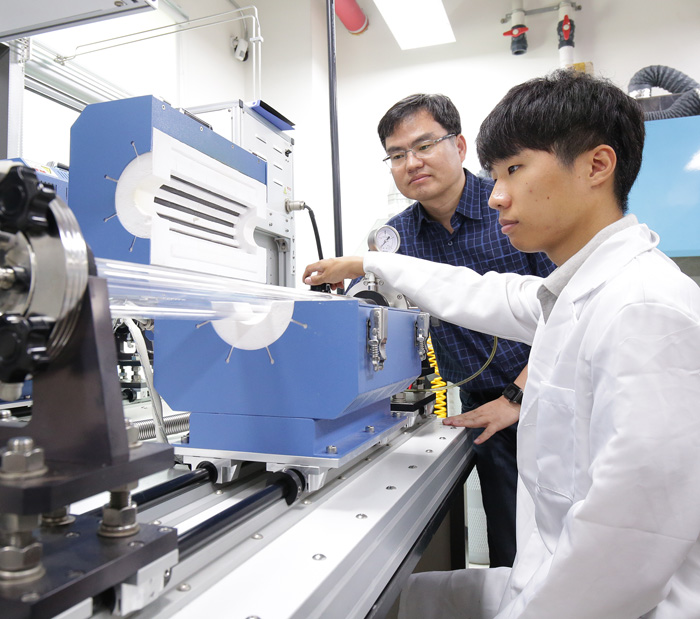
Mechanical Engineering LEE, CHANG GU Prof.
Ultraclean transfer method developed for large-area 2-dimensional semiconductors
Graphene, which was discovered in 2005 and awarded the Nobel Prize in 2010, has been so intensely studied due to its high charge carrier mobility, high electric conductivity, superior mechanical strength, excellent chemical stability, and high optical property, and its commercialization has been attempted in various ways and areas. However, despite those strengths, it has been considered hard to be utilized as an electronic material due to the zero bandgap. Overcoming the weakness of graphene, 2-dimensional (2D) semiconductors, such as molybdenum disulfide (MoS2), began to be investigated and are gaining attention and interest among scientists and engineers. Unlike graphene, 2D semiconductors have some bandgaps similar to that of silicon and exhibit reasonable charge carrier mobilities. Hence they are expected to become one of the main semiconducting materials for the next-generation electronics. In addition, it is highly probable that they will become an important material for flexible electronics due to the atomic-level thickness. However, still large-area synthesis or transfer techniques for commercialization of 2D semiconductors are being developed at too slow pace and are at immature stage. Out research team have been developing techniques to grow 2D semiconductors at wafer-scale and to transfer unto flexible substrates and have fabricated high-performance electronic device arrays. At first, a 2D semiconductor is synthesized at 600 degrees on a silicon substrate and the synthesized film is transferred onto a plastic substrate using epoxy glue. (Refer to figure 1) In this process, the liquid-phase glue is poured onto the plastic substrate and the 2D semiconductor film is glued and cured. Then, the glued 2D material film is separated from the silicon substrate in water. The film is easily separated because of its hydrophobicity. Conventionally, when 2D materials are transferred, the substrate had to be etched or they had to be transferred twice to the final target substrate. During the transfer, the film was damaged due to the chemical corrosion or mechanical stress and the quality was degraded. However, the transferred film of ours did not have any sign of damage, and the quality before and after the transfer was almost identical. This is because the atomic-level flatness is maintained and no residues remain even after the transfer. This transfer technique can be applied to various 2D semiconductors at large size, used to the fabrication of flexible displays, sensors, and logic devices, and adopted to the commercial mass-production processes.
- No. 46
- 2018-07-05
- 1632
-
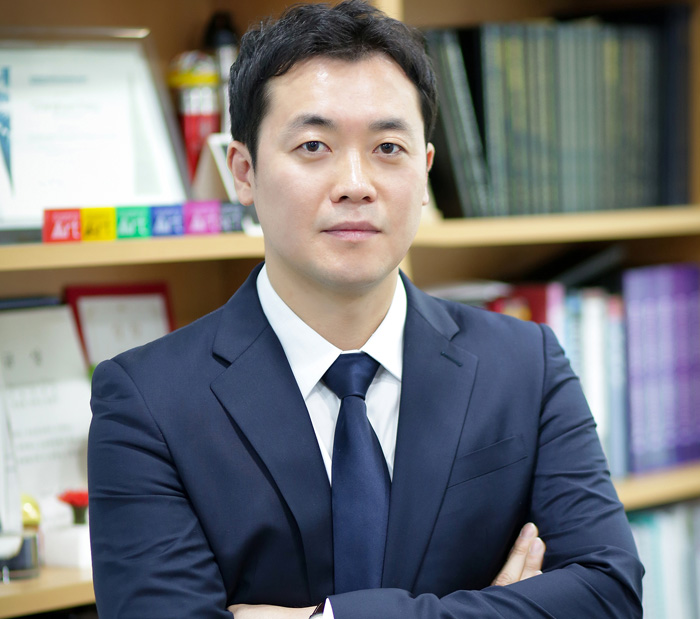
Chemical Engineering PANG, CHANGHYUN Prof.
A wet-tolerant adhesive patch inspired by protuberances in suction cups of octopi
A wet-tolerant adhesive patch inspired by protuberances in suction cups of octopi -Nature, Materials science: How to suck like an octopus- Adhesion strategies that rely on mechanical interlocking or molecular attractions between surfaces can suffer when coming into contact with liquids. Thus far, artificial wet and dry adhesives have included hierarchical mushroom-shaped or porous structures that allow suction or capillarity, supramolecular structures comprising nanoparticles, and chemistry-based attractants that use various protein polyelectrolytes. However, it is challenging to develop adhesives that are simple to make and also perform well- and repeatedly- under both wet and dry conditions, while avoiding non-chemical contamination on the adhered surfaces. Here Prof. Chang Hyun PANG and his team present an artificial, biologically inspired, reversible wet/dry adhesion system that is based on the dome-like protuberances found in the suction cups of octopi. To mimic the architecture of these protuberances, they use a simple, solution-based, air-trap technique that involves fabricating a patterned structure as a polymeric master, and using it to produce a reversed architecture, without any sophisticated chemical syntheses or surface modifications. The micrometre-scale domes in our artificial adhesive enhance the suction stress. This octopus-inspired system exhibits strong, reversible, highly repeatable adhesion to silicon wafers, glass, and rough skin surfaces under various conditions (dry, moist, under water and under oil). To demonstrate a potential application, they also used our adhesive to transport a large silicon wafer in air and under water without any resulting surface contamination. Their octopus-inspired adhesives might be useful when applied over skin or a wound and so partially assist with wound healing. They note that our patches promoted wound healing less well than did 3M Tegaderm, but they are investigating stem-cell and drug-loading approaches to improve their practical utility. Please follow the link for the published news. https://www.nature.com/nature/journal/v546/n7658/full/546358a.html http://gizmodo.com/octopus-inspired-materials-could-one-day-save-your-life-1796090566
- No. 45
- 2018-07-05
- 2137
-

Biomedical Engineering CHANG, JAE BYUM Prof.
Prof. CHANG discovers a new way to achieve ultra-high resolution images of various tissue samples
Researchers at Sungkyunkwan University and Massachusetts Institute of Technology (MIT) have developed a new way to achieve ultra-high resolution images of various tissue samples with a low-cost microscopy system. The new technique uses a swellabel hydrogel to physically expand tissue samples. Two years ago, Prof. Ed Boyden's lab at MIT showed that is was possible to expand tissue samples after forming a swellabel hydrogel inside tissue samples and then washing the sample-hydrogel compites in water, resulting in 4.5-fold linear expansion (100-fold volume expansion). Now, the researchers at Sungkyunkwan University and MIT together have shown that it is possible to expand tissue samples multiple times, resulting in 20-fold or even larger linear expansion. Using this technique, the researchers were able to image tissues with a resolution of 22 nanometers, which is similar to or even better than that achieved by state-of-the-art super-resolution imaging techniques, such as stimulated emission depletion (STED) microscopy or Stochastic optical reconstruction microscopy (STORM). However, this technique is much cheaper and simpler than those delicate, complicated, and expensive techniques. Also, this method enables large-scale 3-D volume super-resolution imaging. Left: 100-um thick mouse brain slice. Small piece with a height of 0.17 cm was expanded 20-fold and the height after the expansion was 3.4 cm. Right: Confocal microscopy image of neurons after the 20-fold expansion. The researchers showed that this technique works well with various tissue types, including mouse brain, lung, and liver. Prof. Jae-Byum CHANG, who is the first author of the paper, which apprears in the April 17 issue of Nature Methods, mentioned that this technique would be very useful in mapping neuron circuits of brain and also studying the heterogeneity of cancer or studying the detailed process of animal development. He also added that he would like to combine artificial intelligence (AI) and this technique to enable mass-data acquisition and mass-data analysis.
- No. 44
- 2018-07-05
- 1765
-
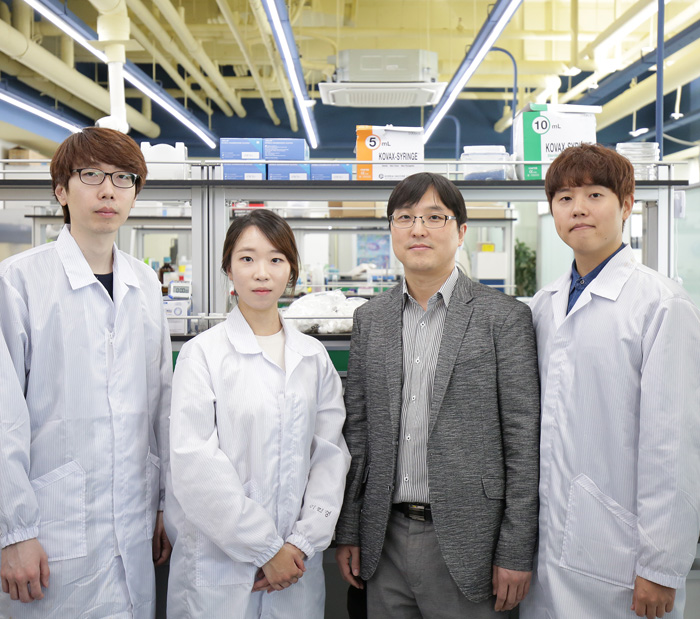
Advanced Materials Science and Engineering KIM, YONGHOON Prof.
Photonic neuromorphic devices: For the light speed cognitive computing
The Von Neumann computer only can do well-structured mathematical calculation. The brain, However, can make proper decision under unfamiliar situations based on the past experience and memory consuming 20 Watt so that the brain have been attracting as a biological model to make the energy-efficient cognitive computing system. Neural cell, which is the building block of the brain transmit the electrical and chemical information through the synapse and its connecting strength is modulated according to the neural activities. This operating principle contributes to a significant role in learning and memory so that the key issue for making brain-like electronics is to emulate behaviors of neurons and synapses. Recently, a team of researchers from the Sungkyunkwan University in Suwon, Korea, led by Prof. S. K. PARK and Prof. Y. H. KIM successfully mimic short-term memory/long-term memory, spike-timing dependent plasticity and neural facilitation, which is a major synaptic function for learning and memory, in Advanced Materials. These synaptic functions were emulated by using the inherent persistent photoconductivity characteristics of amorphous oxide semiconductors (AOSs). Prof. KIM et al. not only emulate synaptic functions of the brain, but also explore the dynamics of photo-generated carriers for various AOSs systematically to reveal the underlying mechanisms of the photo-induced carrier generation and relaxation behaviors. They found that the activation energy for the neutralization of ionized oxygen vacancies had a significant influence on the photo-carrier dynamics. Given that photonic neuromorphic devices opens the door of opportunities for the mimicry of learning and memory function with the ultrafast operating speed and broad bandwidth for applications in cognitive computing system.
- No. 43
- 2018-07-05
- 1707


